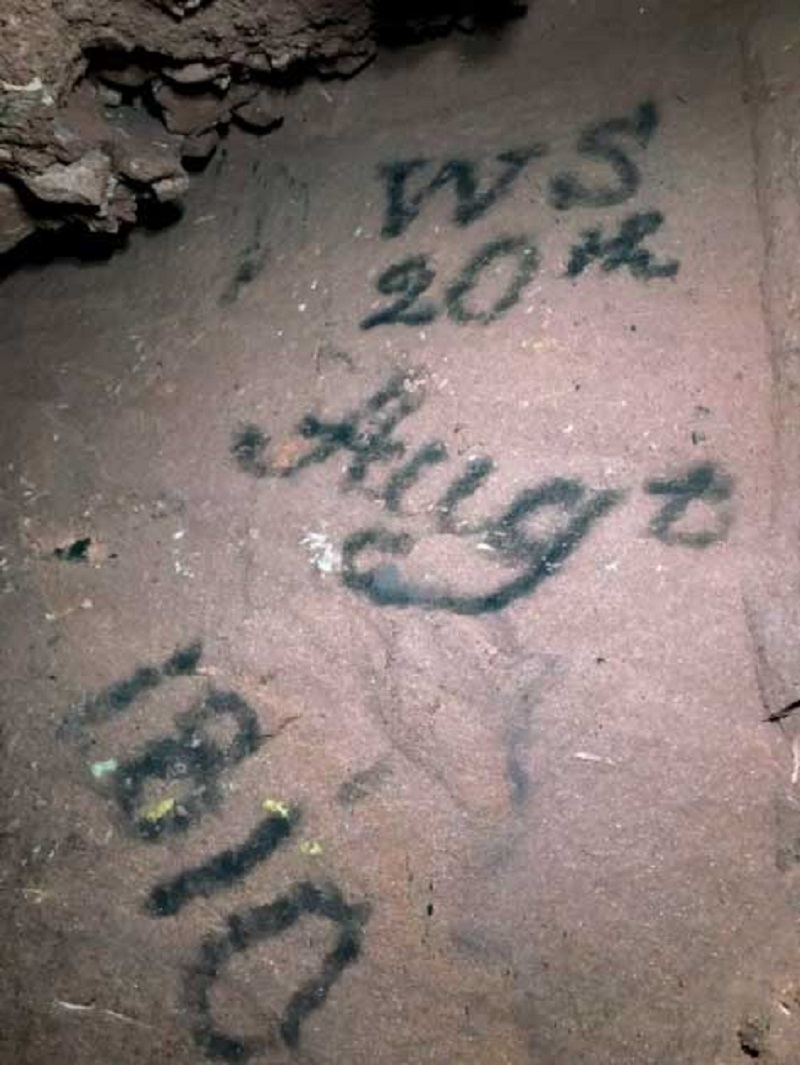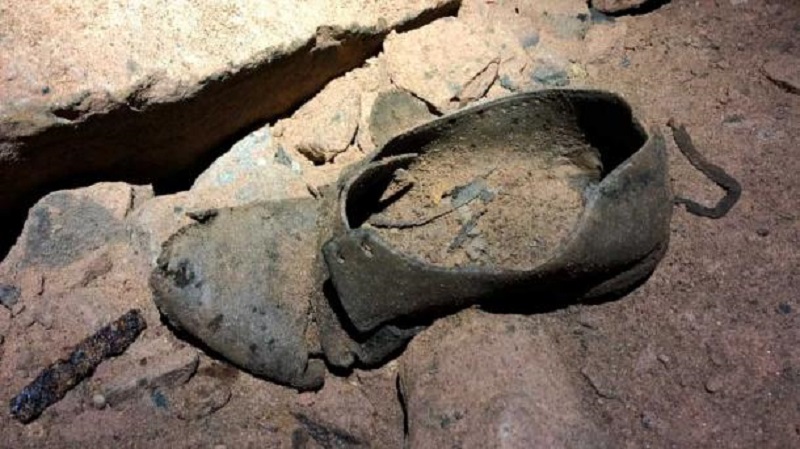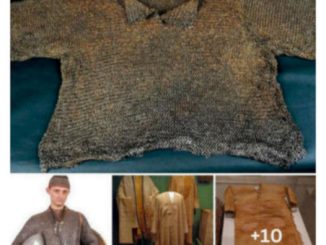Cavers exploring underground spaces in Alderley Edge, Cheshire in northwestern England were stunned to discover a sealed and abandoned mineshaft that hadn’t been visited by anyone since the early 1800s. Despite the passage of time the contents and interior of the mine were in pristine condition, as if everything had been frozen in place for two centuries.
Hermetically sealed for 212 Years
This hidden underground space in has been identified as a cobalt mine. It was last open during the time of the Napoleonic Wars, as was revealed by a message left behind by a miner working one of the mine’s last shifts. Written in candle soot, the inscription reads ‘WS 20 August 1810.’ Presumably this was left as a remembrance of a mine about to close and a job about to be lost, and in the still air of the sealed-off mine the message has been preserved intact after all this time.
This incredible find has just been revealed to the public in a National Trust press release.

Message left in candle soot is a signal of when the mine was closed, at the time of the Napoleonic Wars. (© Ed Coghlan / Derbyshire Caving Club via National Trust)
“This mine hasn’t been disturbed by later mining, it’s not been broken into by kids in the 1960s, it’s not been filled with bottles or other rubbish,” stated National Trust archaeologist Jamie Lund, marveling at such an unusual find. “It is literally a time capsule in terms of giving a glimpse into the environment that these miners, who were extracting cobalt, encountered.”
A lack of oxygen circulating underground is the reason why everything was so well preserved. Among the items found inside the mineshaft were clay pipes, one leather shoe, and a small bowl. The latter was especially intriguing, since it actually had a small rock wall constructed around it, as if it was some type of shrine being put on display. Historians speculate this may have been a superstitious group of miners’ way to show gratitude for the rich vein of cobalt that had been discovered in the mine, which would have been an appropriate “tribute” since cobalt was used at that time to add color to blue and white pottery.
This eating bowl was placed as if showing gratitude, but the motive is speculation. (Paul Harrison – Derbyshire Caving Club via National Trust)
Other signs of occupation in the mine include the fingerprints of the men who worked there, which were left pressed into chunks of clay that were used to hold candles to the rock walls. On one wall there was an imprint of corduroy pants apparently left by a miner who had leaned against the clay. Wooden struts to support the mine are still intact and in good shape, and a windlass (a hand-powered lifting device for carrying ore out of a mine) wound with rope made from hemp is still in perfect working order.
Part of a windlass with rope still wrapped around it. (© Ed Coghlan – Derbyshire Caving Club via National Trust)
Historians have been pouring over written records from Cheshire that date to that time, in an attempt to identify the individual known as ‘WS.’ So far these efforts have been unsuccessful, and they have been complicated by the fact that wage reports dating back to that time was destroyed in a fire.
Miners shoe in an almost perfect state of preservation. (© Ed Coghlan – Derbyshire Caving Club via National Trust)
The Brief History of Cobalt Mining at Alderley Edge
Alderley Edge is a village of approximately 5,000 people nestled deep in the peaceful countryside of Cheshire. The mine shaft was drilled into a slope overlooking the village, and it is one of many mines that were open in this area over the course of many centuries.
Written records and archaeological excavations have revealed that people have been mining for copper, cobalt, and lead in Alderley Edge on and off since the Bronze Age. It was heavily mined during Roman times, and again between 1690 and the 1920s.
The caves and old mines in the area are currently owned by the National Trust. However, the Trust leased them out to the Derbyshire Caving Club in the 1970s, and members of the latter organization have been searching for new mines or caves to explore ever since.
The Derbyshire Caving Club explorers who discovered the sealed-off cobalt mine in the autumn of 2021 knew right away it was an unusual find.
“To find a mine in pristine condition, together with such personal objects and inscriptions, is rare,” said Club secretary Ed Coghlan. “It is a compelling window into the past and to the last day when the mine workers stopped their activities.”
The newly discovered mine shaft plunges 33 feet (10m) underground. It was opened specifically to mine blue cobalt oxide, which was used to color pottery, paper, and glass during medieval and post-medieval times.
After completing a closer examination of the mine, experts concluded it was abandoned and sealed around the year 1810, as was suggested by the message from ‘WS.’. Cobalt mining in England was relatively limited in the early 19th century, because imports from Europe were so easy to acquire. During the Napoleonic Wars (1803-1815) imports were halted, however, and that made it necessary to expand domestic cobalt production.
Cobalt was first discovered in Alderley Edge in 1806. But importing resumed by 1817, which essentially brought a halt to all cobalt extraction in the region.
Keeping a Pristine Site Pristine Forever
The window of opportunity for cavers, historians, and archaeologists to explore the unearthed mine shaft will be relatively short. The shaft will soon be sealed and the site closed to all visitors, to make sure everything is preserved in its current state.
“The objects found in the mine have been photographed and cataloged and left where they were found, to remain in the underground conditions which have preserved them,” said Lund. “It leaves the mine as a time capsule, protecting a place that was once a hive of activity for future generations to explore and enjoy.”
While in-person visits to the site at Alderley Edge will be prohibited, the National Trust has created an interactive 3D model of the mine which can be accessed through their website. This lifelike recreation will allow virtual visitors to see exactly what cavers saw when they first entered the newly opened mine shaft.





